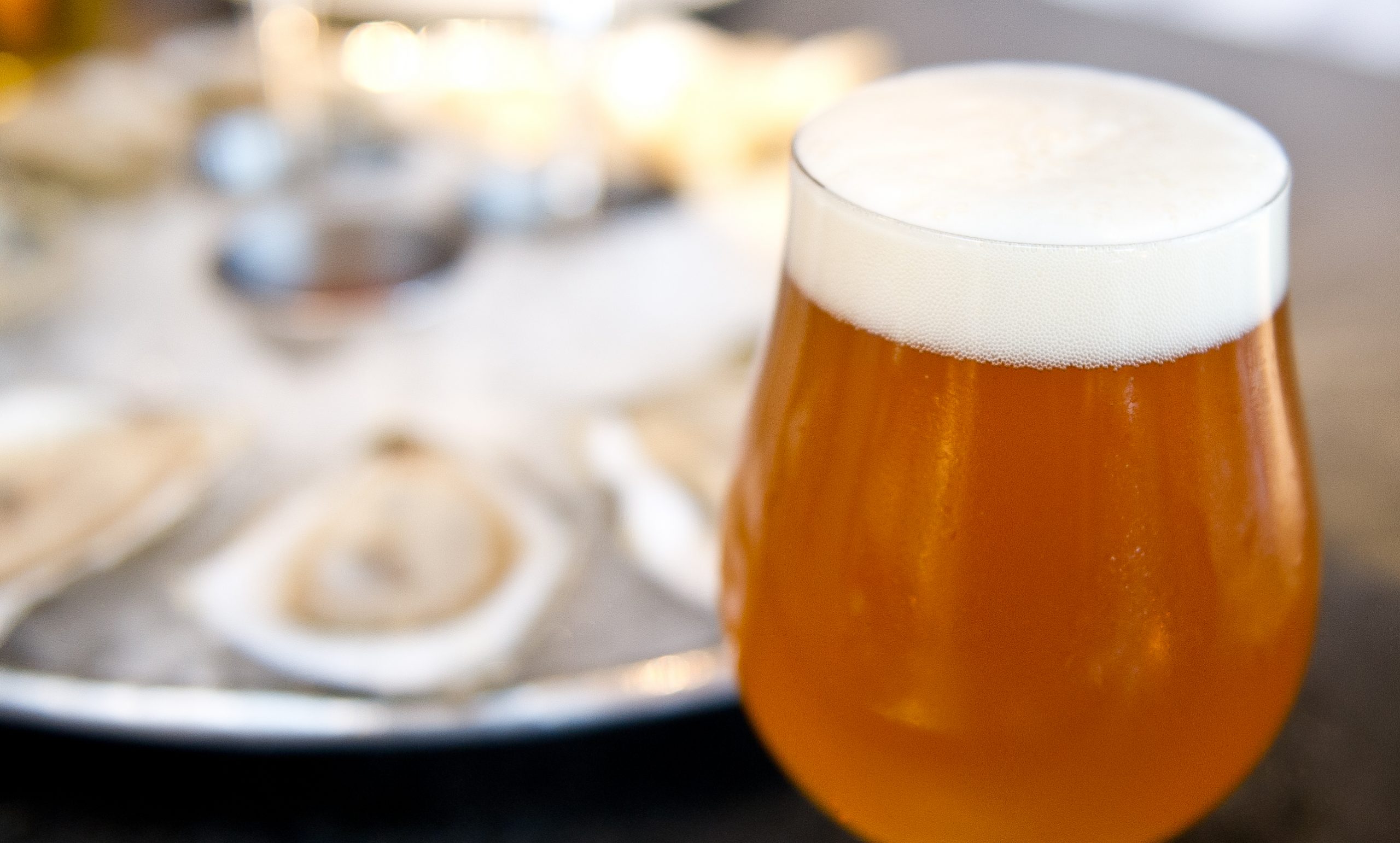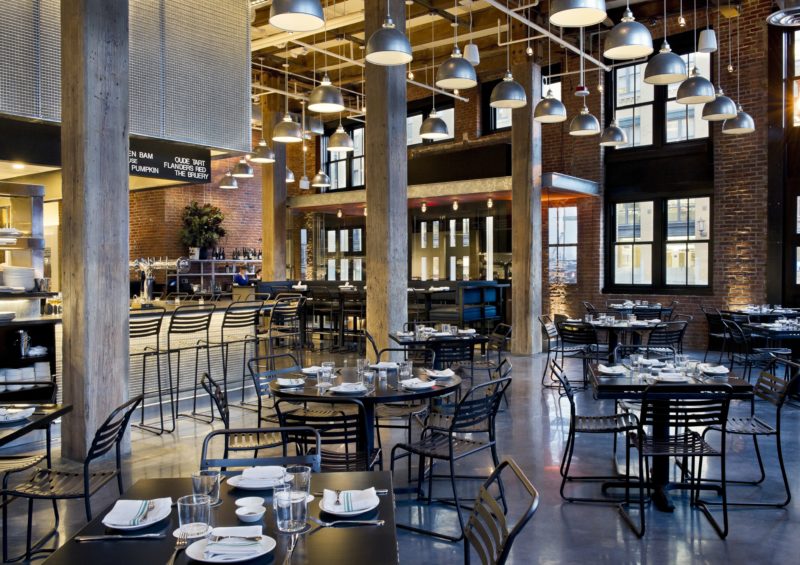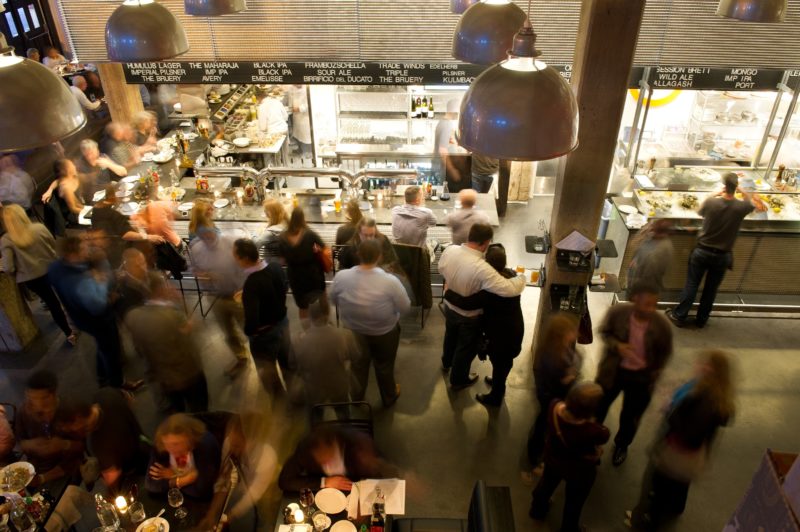


Running a beer-centric bar or restaurant in 2017 might not sound too difficult to the average industry professional. After all, there are more than 5,000 operating breweries in the U.S. alone, many of which are producing world-class beers. And many of them are more than happy to share those beers with any interested retailer, capacity permitting.
But, creating a high quality beer program isn’t as simple as merely serving any given beer that fits the ever-nebulous definition of “craft.” In fact, beer bars are constantly wrestling with choosing the right beers–out of tens of thousands–to pair with their own limited draft lines and fridge space. This presents a bit of a dilemma: How can one create a unique beer program that stands out without sacrificing that which is popular and brings people through the doors?

In Boston, Row 34 has built a reputation for its own beer program. At any given time, the restaurant offers a diverse list of sour beers, hop forward ales, Belgian classics, and local stalwarts, all flowing through its 24 draft lines. (It also keeps upwards of 35 bottles at the ready.) Indeed, its commitment to beer has earned the company considerable praise. And, for the past nine months, much of the credit for that goes to Suzanne Hays. As the restaurant’s beer director, she’s in charge of curating its beer selection as well as overseeing beer-related events and education initiatives.
Hays caught up with BevSpot to share with us her philosophy when it comes to creating a unique beer program.
The following has been edited lightly for clarity.
I would say variety and diversity are kind of what I look for in the beer list, at least at Row 34. When I’m thinking about putting together a sound draft list, for example, I want to make sure there’s variety as far as style and breweries go. And then diversity, too.
I think it’s really important to embrace the sort of local craft beer culture happening in New England, which is so cool. But also taking into consideration some of those breweries that have been around for hundreds of years, thinking of Orval and Weihenstephaner, and Schlenkerla, and finding that happy balance between the old and the new.
We can take the IPA, for example. There are so many IPAs out there that it can be almost overwhelming to narrow it down. What I like to kind of do is, at one time we’ll have five or six IPAs on. So maybe a feature an East Coast IPA, that sort of New England, hazy IPA, and then feature a West Coast IPA, something that’s a little bit more resinous and dank and piney, and then maybe something from the Midwest that’s got a little bit more malt flavor profile to it.
And sometimes even throwing in an English IPA or something from an upcoming brewery like To Øl, for example, who kind of experiments with the flavor profiles of American beer and puts their own spin on it. Trying to take, if you think about one style in particular, and try to feature the wide range of it, I guess you could say.
Honestly, I think it just depends on what the guests and consumers are looking for. There are of course those times when I go to one of those bars that has 60 or 70 draft lines on and I really enjoy kind of seeing what they find to be relevant or what they have on. And sometimes I’m in the mood to sift through that. Then there are some people, they know what they want, they want one or two things and they go for that and those places that have 10 to 12 draft lines, those work out too.
For me, personally, I love that we have the 24 lines. I think that’s a really nice number. It allows us to have some variety in the list, but without it being overwhelming. What’s important here, we’re kind of given this unique situation in that people come to Row looking for something a little bit different, and I think it could be overwhelming if we had more than 24.

“Sometimes people might be afraid to step outside the box and I think that’s a mistake. I think people should take risks and take chances…”
I mean it’s a combination of both. At least at Row, we’re in a spot where we’re doing that already. There really isn’t a beer that we have on all the time, the bottle list excluded. The draft line, we honestly rotate pretty frequently, and you’re not going to find the same beer on all the time.
We don’t really have a consistent line, so I think we’re already kind of preparing ourselves for, as you would say, the “promiscuous drinker,” or someone looking for something a little bit different. But it can be difficult to predict what people are going to be wanting and are coming to expect out of beer bars.
Sometimes people might be afraid to step outside the box and I think that’s a mistake. I think people should take risks and take chances and, you know, they may not always work out, and that may not be the most popular decision.
But stepping outside your comfort zone and taking a chance on a brewery that’s smaller, or just coming up, or experimenting with a style that you haven’t had in a while, like rauchbier for example, I think that’s often a mistake that people can make when they’re putting something together. They often want only what’s popular and the big names. They want the Cantillons of the world. They want Pliny the Elder. They want those big hitters. After a while, you can only get so much of that. I think that taking risks is really something that not a lot of people are comfortable in doing and I think that’s really where some would fall short.
This is one of those things always in the back of my mind. But honestly, in the forefront of my mind is always what works for us? What’s going to work for Row? The way I try to stay relevant is just researching, drinking new things, tasting new things, listening to my distributors, listening to the staff and friends. I think we set ourselves apart really just by creating something that is authentic to the restaurant itself.
